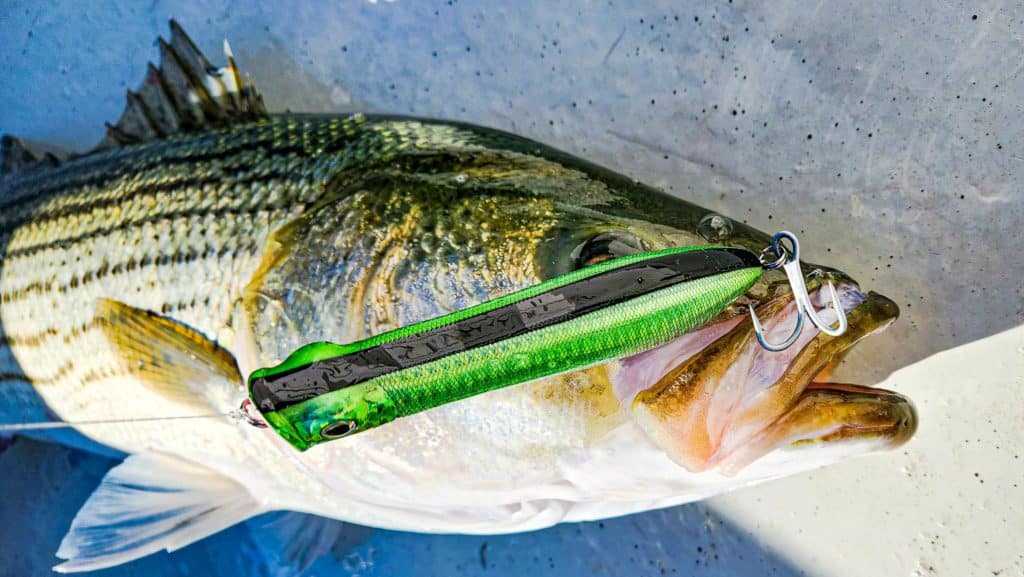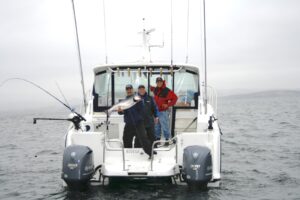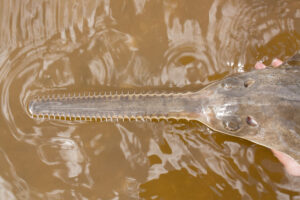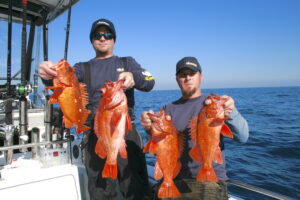
The Maryland Department of Natural Resources has enacted emergency regulations that eliminate Maryland’s trophy striped bass season. Anglers are prohibited from targeting stripers in the Maryland portion of the Chesapeake Bay from April 1 to May 15. Additionally, anglers are prohibited from targeting striped bass through the end of May in the Susquehanna Flats. These regulations are intended to protect the mature fish that return to the Chesapeake and its tributaries to reproduce each spring, and are effective immediately.
“Maryland waters serve as the spawning grounds for many of the striped bass that migrate up and down the East Coast, and we take our leadership role in managing the overall population seriously,” Maryland DNR Secretary Josh Kurtz stated in a press release last fall. Estimates place the Chesapeake Bay as the primary spawning and nursery area for as much as 90 percent of the Atlantic coastline’s striped bass population. “That’s why we’re putting forth new regulations to protect spawning striped bass. These management actions will complement additional fishing cuts expected to be taken by the Atlantic States Marine Fisheries Commission next year in response to the coast-wide population decline in recent years.”
Why Was the Trophy Striped Bass Season Closed?
The emergency regulations come on the heels of five years of below-average spawning success for East Coast stripers. “The recent recruitment numbers of juvenile striped bass show that additional management efforts are necessary to protect the overall population,” DNR Fishing and Boating Services Director Lynn Waller Fegley said. Last year was particularly rough: Maryland’s annual striped bass young-of-year index, which tracks reproductive success, was only 1.0, well below the long-term average of 11.1. A variety of factors, including warm winters and low water flows, are believed to be the cause of decreased spawning rates. The decreased reproductive rates will become more apparent in later years, as the juveniles mature and contribute to a lower abundance of legal-sized fish. A comprehensive striped bass stock assessment, due to be released later this year, should show how striped bass have responded to previous management actions made by Maryland and others on the Eastern Seaboard during the last few years.
“We believe the proposed regulations will help protect the spawning stock of striped bass in Maryland. Increasing the spawning stock will enhance the odds of successful spawning when environmental conditions are right,” Fegley said. To protect the spawning stock of striped bass, the emergency regs were submitted by Maryland’s DNR and were approved by the Maryland General Assembly’s Joint Committee on Administrative, Executive, and Legislative Review. They complement additional coast-wide recreational and commercial measures set by the Atlantic States Marine Fisheries Commission (ASMFC). The emergency measures are in effect for 180 days; however, anglers should expect to see them for longer than that. The state is working to enact these changes through their standard regulatory process, which put them in place for the foreseeable future.
Other Striped Bass Changes
Maryland’s striped bass anglers will see additional changes in 2024. ASMFC approved an addendum to the Interstate Fishery Management Plan on January 25 that aims to reduce fishing mortality in Atlantic striped bass stocks. That means those participating in the Chesapeake Bay recreational fishery, which includes for-hire vessels such as charter boats, will see a 19-inch to 24-inch slot limit and a bag limit of one fish per person, per day. Recreational anglers fishing the ocean will be subject to a 28-inch to 31-inch slot limit and a coast-wide daily bag limit of one fish. Commercial quotas are cut by 7 percent in both the ocean and the Bay.
Recreational anglers are currently prohibited from targeting striped bass in all waters of the Chesapeake Bay and its tidal tributaries from July 16 through July 31, the hottest part of summer when fish are most vulnerable to dying after being caught and released. To further protect striper stocks, Maryland is also considering extending the recreational and charter boat summer closure by an extra week, through August 7, and closing the commercial hook-and-line season during the recreational and charter boat summer closure









